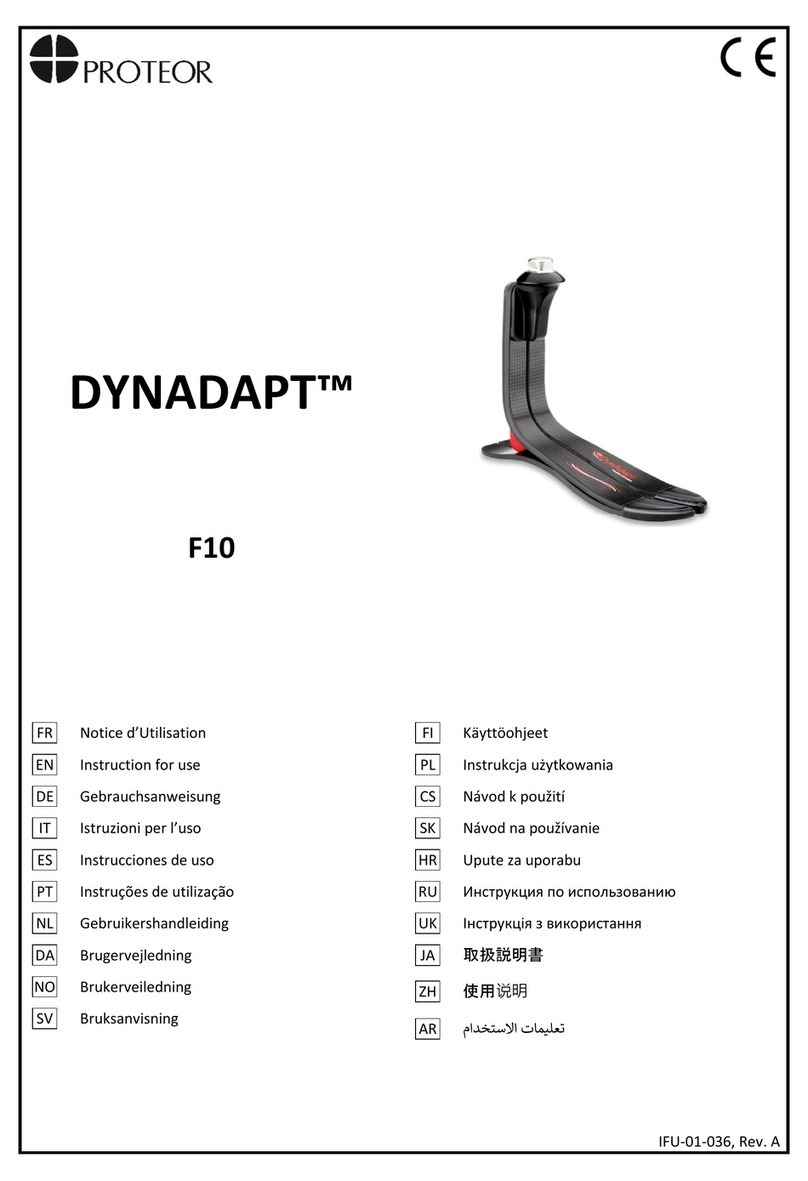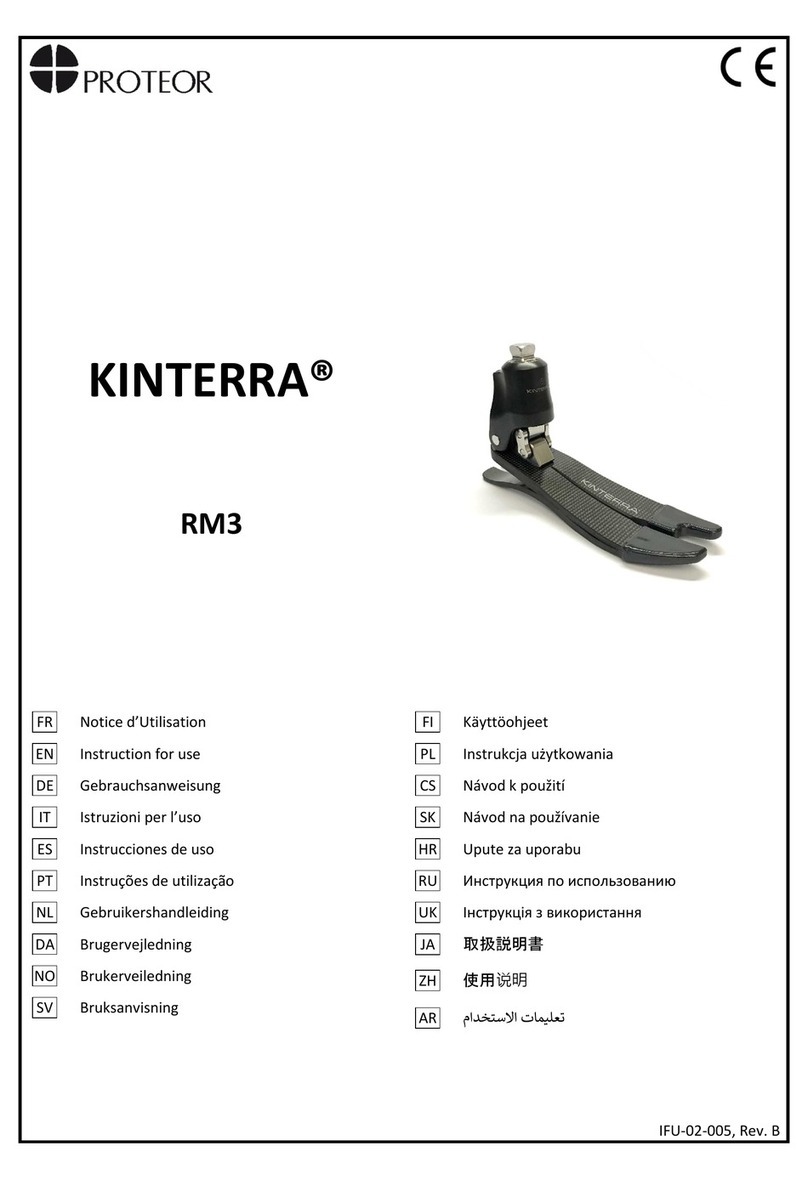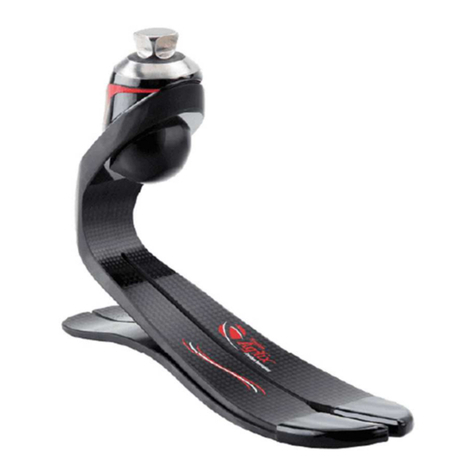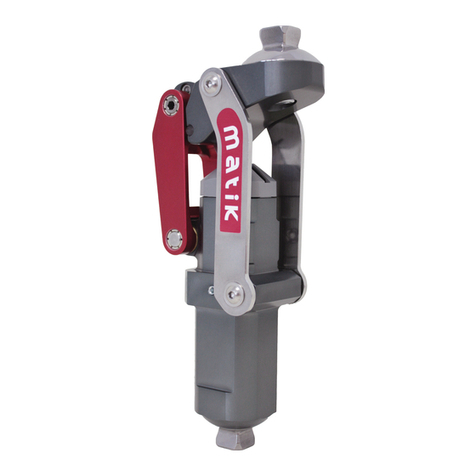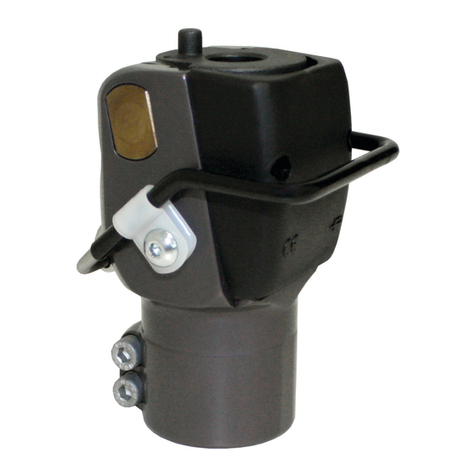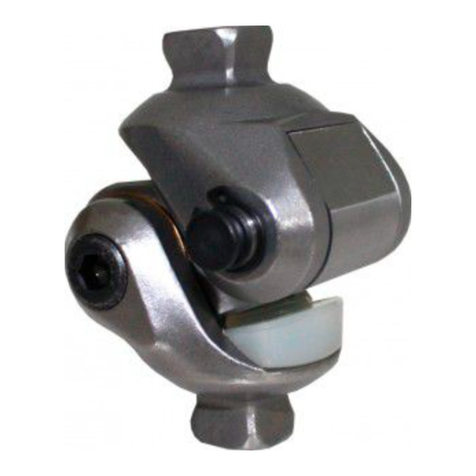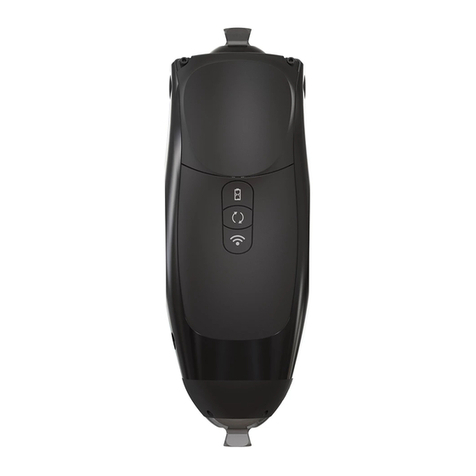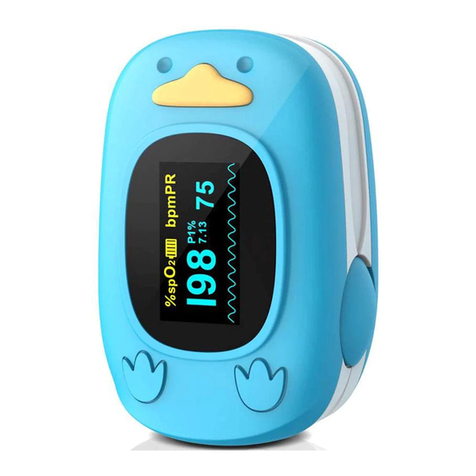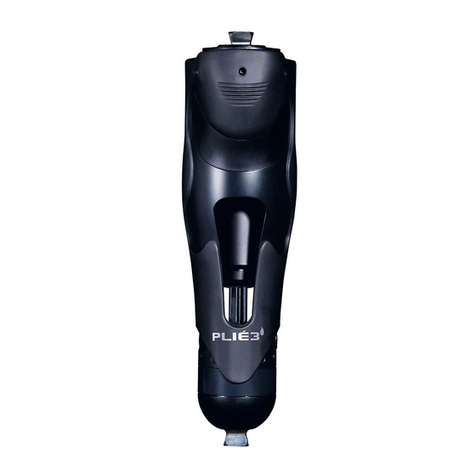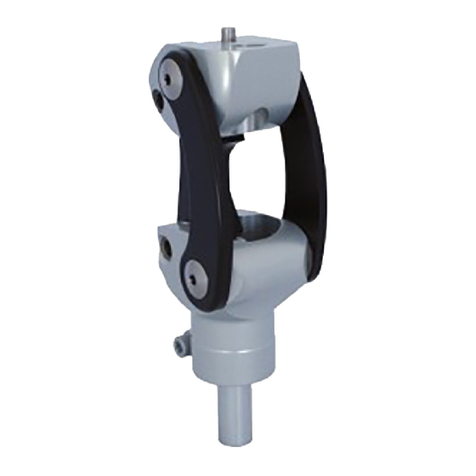
1A51099-0818- Page 10/20
Hinweise :
- Bei Erhöhung des Spitzfußes wird das Aufbau dynamischer, und dadurch wird eine höhere Energierückgewinnung
beim Schrittwechsel erreicht.
- Falls man beim Übergang zur Vorfußbelastung den Eindruck hat, dass der Fuß zu lang ist, oder falls die Fersen-
Unterstützung zu flexibel ist, sollte der Fuß im Bezug zum Prothesenschaft nach hinten verschoben werden.
- Falls die Fersen-Unterstützung zu steif ist, oder falls man beim Übergang zur Vorfußbelastung den Eindruck hat, dass
der Fuß zu kurz ist, sollte der Fuß im Bezug zum Prothesenschaft nach vorne verschoben werden.
5– Fertigstellung: Zur Vermeidung von Reibungsgeräusche, die Socke bis zur Basis der Pyramide ziehen, und z.B.
mit einer feinen Schnur fixieren.
Die Kosmetikanschlußkappe, die unten angegeben sind, sorgen für die Verbindung zum Kosmetik-Schaumstoff und
ermöglichen einen leichten und schnellen Ausbau des Fußes.
Einsetzen: Die Schaumkosmetik auf die gewünschte Länge schneiden und auf dem Fuß positionieren, dann die Kontur
des Malleolus anzeichnen. In der Schaum einen Raum fräsen, der den ausgewählten Verbindungsteil und den aus der
Hülle überschreitenden Fußteil aufnehmen wird. Vorsicht : die Dicke soll ausreichend bleiben, um Kleben zu
ermöglichen. Die Kosmetikanschlußkappe gut positionieren und in der Kosmetik klippen. Die Kontaktflächen mit
Isopropylalkohol reinigen, und die Kosmetikanschlußkappe an der Schaum mit Neopren Klebstoff XC090 kleben. Nach
Fußgröße (cm) 22 zu 25 26 zu 27 28 zu 30
Produkt Nr 1A40013 1A40014 1A40015
6– Lebensdauer
Dieses Teil wurde gemäß Standard ISO22675 getestet ; das Zyklentest mit 2 Millionen Zyklen entspricht eine
Verwendung von 2 bis 3 Jahren je nach der Patientenaktivität.
Eine jährliche Überprüfung von einem Orthopädie-Techniker ist empfohlen.
7– Wartung :
Die Fußkosmetik, die Socke und die Kosmetikanschlußkappe sind die einzige Komponente des
Fußes, die ersetzt werden können (wegen Verschleiß, Verlust, …).
Fuβkosmetik :
Die Fußkosmetik kann mittels der Schuhlöffel 1A40019 entnommen und angezogen werden.
Nur der Austauschbausatz 1A60020-D22 (Fuβkosmetik, Socke und Kosmetikanschluβkappe) soll verwendet werden.
Seite Gröβe in cm
1A40019
8– Verwendung-, Wartung– und Sicherheitshinweise
Die Fußkosmetik mit einem feuchten Lappen oder Schwamm reinigen.
Verwendungstemperatur : -20°C / + 60°C.
Keine Wartung wie Schmieren, Eingriff an den Schrauben oder an einem anderen Teil, ist für diesen Fuß
benötigt, abgesehen von der Wartung der § 7, die durch den Orthopädie-Techniker durchgeführt werden soll.
Eine Verwendung des Fußes, die den Empfehlungen Ihres Orthopädie-Technikers nicht entspricht
(z.B. Tragen von schweren Lasten), kann zur Beschädigung der Fußpassteile führen.
Falls Sie ein anormales Verhalten des Fußes oder Veränderungen in den Eigenschaften des Fußes bemerken,
oder falls der Fuß einem starken Stoß versetzt wird, sollen Sie sofort Ihren Orthopädie-Techniker aufsuchen.
Die Anwesenheit von Sand, Partikel oder Fremdkörper in dem Fuß könnte das Fußverhalten ändern und
Schaden ursachen.
Nach der Verwendung des Fußes im Wasser or in einer sehr schmutzigen Umgebung :
Die Fußkosmetik entnehmen und die Socke ausziehen
Der Fuß und die andere Teile mit klarem Wasser gründlich spülen, um die Partikel (Schlamm, Sand ...) zu entfernen
Die Komponente trocknen, und dann die Socke und die Fußkosmetik wiedereinsetzen.

